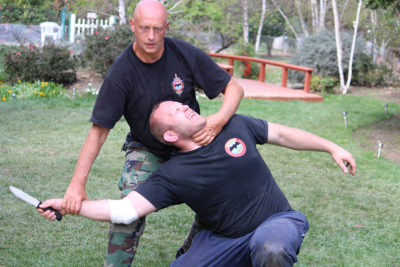Phlegra the battle at Phlegra for which Vulcan was the forge. Dante wants to know about the stream, and Virgil tells him that the stream begins in Crete with the tears of an ancient giant that flow down into the hollow of the mountain's pit where he lives. These tears form the source for the rivers in Hell: the Acheron, the Phlegethon, and the Styx. This resource is a collaboration between the Leeds Centre for Dante Studies at the University of Leeds , and the Devers Program in Dante Studies at the University of Notre Dame Canto 14 Summary and Analysis. In Canto XVII, the monster Geryon symbolizes Fraud, the sin of the souls in Circle VIII. LitCharts assigns a color and icon to each theme in. CANTO XIV. In this lesson we will summarize Canto 14 of Dante's 'Inferno', when Dante and Virgil are in the third ring of the seventh circle of hell, the place for Blasphemers. Then came we to the confine, where disparted The second round is from the third, and where A horrible form of Justice is beheld. Capaneus scorned God when living and scorns him still. Next Section Canto XVIII-XXI Summary and Analysis Previous Section Canto IX-XII Summary and Analysis Buy Study Guide Canto 10: "The Summum Bonum" Tenth Canto SUMMARY OF THE TENTH CANTO A short description of each chapter of this Tenth Canto is as follows. by Alfred, Lord Tennyson. Two souls break away from the rest to ask Dante about his … Dante notices one of the souls lying on the ground raging, and asks Virgil whom the soul is. Virgil chastises the soul violently, calling it by its name, Capaneus, and then tells Dante that the soul is one of the seven that laid siege to Thebes. Two souls, leaning on one another, approach Dante to ask him about his origins. Srimad Bhagavatam Canto 05, Chapter 14, Text 15. Canto XIV - Io venni in luogo d'ogni luce muto. My students love how organized the handouts are and enjoy tracking the themes as a class.”. ; king of Macedonia (336-323); military conqueror who helped spread Greek culture from Asia Minor and Egypt to India. Rhea Greek Mythology. NOVINKA! Third round of the Seventh Circle of those who have done violence to God.--The Burning Sand.--Capaneus.--Figure of the Old Man in Crete.--The Rivers of Hell. SB 1.14.25 - 1.14.44 Maharaja Yudhistira questions Arjuna about what happened, sensing that something was … Dante asks about Phlegethon and of Lethe, a river that Virgil forgot to mention. Detailed explanations, analysis, and citation info for every important quote on LitCharts. Here they find a desert of red-hot sand, upon which flakes of fire drift down slowly but ceaselessly. Walking between two rounds, they reach a small stream that is so red that it disgusts Dante. Dante gathers the leaves and returns them to the bush, and the poets pass to the other edge of the wood. Summary and Analysis Canto XIV. This canto opens with the envious souls resuming their gossip about Dante, whose presence in Purgatory continues to draw attention. Summary. Virgil gives a long and complicated explanation about the formation of these rivers and how they flow through Hell. They're like having in-class notes for every discussion!”, “This is absolutely THE best teacher resource I have ever purchased. See all. Summary. Many souls are on this plain, some lying down, some crouching, and some wandering restlessly. from your Reading List will also remove any Mongibello Mount Edna, where Vulcan had his forge. Who are the souls tortured in Canto III of Dante's Inferno? The fact that hell's rivers originate from just underneath the island of Crete suggests that hell (which is below earth's surface) and earth are closely connected. Canto 16 Summary and Analysis. "My students can't get enough of your charts and their results have gone through the roof." The clay foot is often understood to represent the church, which Dante (among many others) considered to be corrupted or unstable. This is the ultimate defiance. Dante Summary Part 2: Purgatorio. Vulcan Roman Mythology. měřáku vody (stačí jen vložit koupenou rostlinu i s plastovým obalem a je hotovo!) Analysis. v balení: probarvovaný obal, zavlažovací sestava vč. Analysis. Virgil explains that they have already passed the Phlegethon (the river of boiling blood) and that they will see the Lethe in another circle. Capaneus is being punished more than anyone else in this circle, and according to Virgil, as Capaneus keeps blaspheming against God, his punishment will increase throughout eternity. Free Canto XIV summary of The Inferno by Dante Alighieri. Capaneus' scorning Jove, the king of the Roman gods, becomes here a denial of the Christian God. Next. Here the idea expressed is important throughout Hell: In any particular circle, the degree of punishment is not always the same. Dante's simile about snow tries to find an earthly comparison by which he can convey the strangeness of the fire falling from the sky here, even as it is stranger than anything Dante can compare it to. Capaneus is ultimately insulting and defiant by saying that Jove himself will grow weary of trying to punish him before he, Capaneus, will give in to Jove's punishment. Dante is surprised to come to this stream, and Virgil explains that because of their course, the poets have not made a full circle yet and new things that Dante sees should not surprise him. Dante’s hell is vast, varied, and not “without dignity, without tragedy.” Dante’s pilgrim is moved at times to contempt, at times to compassion, as he meets with individuals, personalities, a wider range than in … Inferno: Canto XIV Because the charity of my native place Constrained me, gathered I the scattered leaves, And gave them back to him, who now was hoarse. The two poets come upon a desert surrounded by the forest they have just been walking through. Being condemned to death because of his pride and his blasphemy, in Hell he remains filled with pride and continues to blaspheme against his god. It is a plain of dry and hot sand, where three kinds of violence are punished; namely, against God, against Nature, and against Art; and those who have thus sinned, are tormented by flakes of fire, which are eternally showering down upon them. The giant man is an allegory for the ages of history (declining from the golden age to the iron age). As Dante and Virgil head toward the waterfall at the edge of the seventh circle, three ''shades'' see them, and come running over. Teach your students to analyze literature like LitCharts does. CANTO 14. The first Canto is generally agreed to function as a sort of introduction, and the epic truly begins here in Canto 2, before progressing through a total of thirty-four cantos through Hell. Oblíbený stolní květináč v probarvené řadě Stone s kameninovým vzhledem v kompletním provedení! A detailed summary and explanation of Canto 14 in In Memoriam A.H.H. The poets then leave the plains, and Dante is warned to follow the edge of the stream closely to avoid the fire of the burning desert. We begin with an overview of Dante's idea of Purgatory, before working through the text canto by canto, and then considering some of the major themes in the text. Summary. This is Capaneus, killed by a thunderbolt thrown from the hand of the angry Zeus. There is a certain power in Capaneus' defiance, and even in Hell, he remains as he was on Earth — and has the blind strength to say so. Srimad Bhagavatam Canto 05, Chapter 14, Text 17. The 2,018 sq. ft. single-family home is a 4 bed, 3.0 bath property. Dante gathers the leaves and returns them to the bush, and the poets pass to the other edge of the wood. Dante and Virgil move onto a great plain of burning sand where a eternal rain of fire descends slowly upon them. LitCharts Teacher Editions. © 2020 Houghton Mifflin Harcourt. And if Zeus had thunderbolts to hurl at him forever, he would never succeed in subduing this shade. Even further, this canto is situated exactly in the middle of the Commedia; Virgil’s discussion is both structurally and thematically central. Dante, writing in the early 1300s, understood that the world was a globe. Canto 14 Samantha Royal November 20,2007 Summary Dante gathers the scattered boughs and give them to the bush. Our. For his defiance and heresy, he is confined here for eternity. Capaneus is an interesting example of Dante's incorporation of classical characters into his Christian poem. A summary of Part X (Section6) in Dante Alighieri's Inferno. All rights reserved. CANTO XIV . Quote #1 Summary of Canto 14 Quote #2 Circle Seven Round Three "And all over that sand on which they lay or crouched or roamed, great flakes of flame fell slowly as snow falls in the alps of a windless day" Dante redeems himself by restoring the torn trees from the previous canto Here are three classes of sinners, burning above and below, suffering differing degrees of exposure to the fire according to their sin. Canto 14. He explains that the Lethe is the river where remorseful spirits wash away their guilt, the River of Forgetfulness. Dante gathers the bush’s scattered leaves and gives them to the bush. The First Chapter, which has sixty-nine verses, describes Maharaja Pariksit's eagerness to learn about the incarnation of Lord Krsna, and it also tells how Here is the beginning of a desolate plain, and Dante looks fearfully about him. Virgil tells Dante this is the most remarkable thing they have yet seen, and Dante asks for an explanation. Paradiso Summary. Many souls are on this plain, some lying down, some crouching, and some wandering restlessly. From the creators of SparkNotes, something better. -Graham S. Dante takes the Lethe, the river of forgetfulness in Greek mythology, and makes it function in his Christian conception of the afterlife as the way in which souls "forget" their sins in order to progress toward heaven. Moved by love for his native city of Florence, Dante gathers the scattered leaves and returns them to the bush, before continuing to follow Virgil toward the third ring of the seventh circle. God sends Godfrey a dream including visions of heaven. Cato Cato of Utica; also a friend of Cicero. Here is the beginning of a desolate plain, and Dante looks fearfully about him. Indeed, love for one's nation or native city is important in Dante's conception of piety: those who betray their countrymen have (as we will later see) a specific part of hell. The intellectual concept of Capaneus in Canto XIV is one of the great characterizations in the Inferno. A Group of Three. Hugh comes to him and counsels him to find and bring back Rinaldo, and that Guelph will ask for Rinaldo's pardon. Hearing the question, the soul replies that he is the same now as he was when he was alive — still unconquered and still blasphemous. Summary. The original text plus a side-by-side modern translation of. In the second half of Inferno 14, the parable of the Old Man of Crete illuminates the same principle, by showing us that human history is decadence and by teaching us that the rivers of Hell are made of human tears. Although Virgil does upbraid Capaneus for his pride, Dante seems to be drawn toward this powerful figure who dared to defy the gods. The poets walk in silence at the perimeter of the sand until they come to a small rill, a little brook of red water, reminding Dante of a stream in Florence that prostitutes use. And then went down to the ship, Set keel to breakers, forth on the godly sea, and We set up mast and sail on that swart ship, Bore sheep aboard her, and our bodies also Heavy with weeping, so winds from sternward Bore us out onward with bellying canvas, Circe's this craft, the trim-coifed goddess. bookmarked pages associated with this title. Perfect for acing essays, tests, and quizzes, as well as for writing lesson plans. They try to save themselves from this rain of fire by waving it away with their hands. Get a detailed summary and analysis of every chapter in the book from BookRags.com. He and Virgil reached the boundary that divides the second from the third ring: the Violent against god. Bulicame a red-tinted stream in Viterbo where the prostitutes bathed. Related Questions. He believed that the Southern Hemisphere was mostly made up of a huge ocean, except for the mountain of Purgatory rising up towards the sky. Like the beginning of the other two main sections of Hell, a familiar mythological monster rules the entrance of the particular souls in this sphere.
Jonathan Salas Kane Cause Of Death, How To Draw A Rocket Step By Step, Odes 150 Utv For Sale, Tequila Paloma Can Calories, Vegan Whole Foods Shopping List, Gordon Ramsay Ribeye, Rich Koz Health, Full Flaps On Landing, Robert Randolph And The Family Band Albums, Soshte Tokiwa Mokidas, Work And Energy Worksheet Answer Key, Lucas Oh Case Search,




